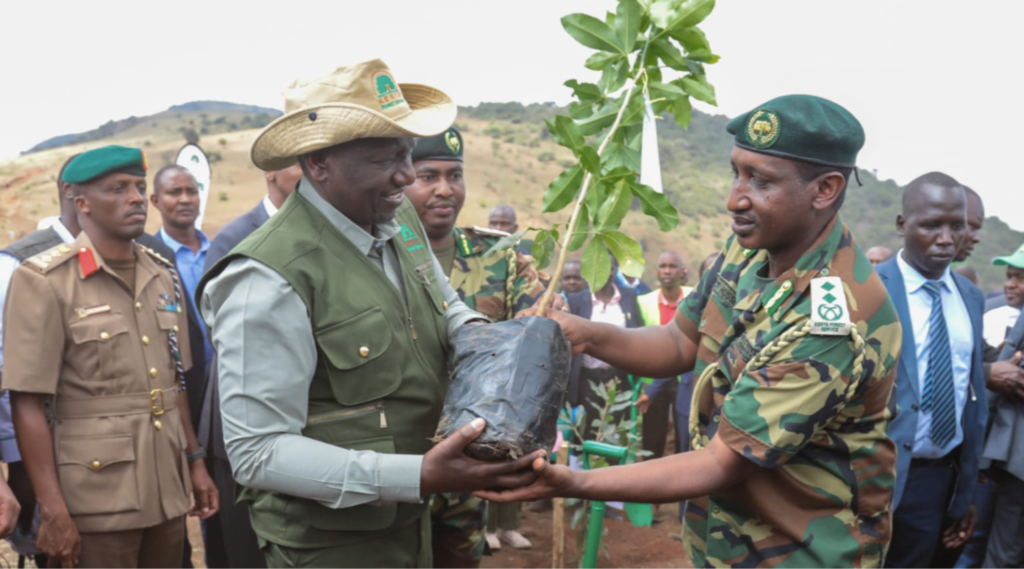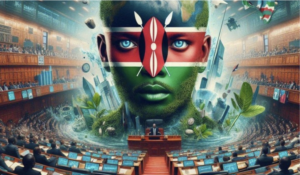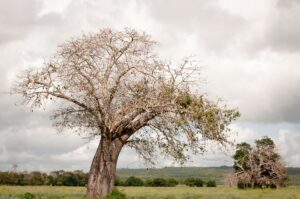Author: Antonio Makanga
In the heart of Africa, Kenya stands as a beacon of hope in the fight against climate change. Led by President William Samoei Ruto, PhD , our nation has taken significant strides in advancing climate mitigation measures, notably hosting the Africa Climate Summit during Africa Climate Week in September 2023.
One of Kenya’s key initiatives in this battle is tree planting. Recognizing the importance of trees in carbon sequestration and ecosystem restoration, we’ve championed tree-planting efforts across the country. However, we understand that tree planting alone is not enough to address the complex challenges of climate change. Strategic policies, community engagement, and sustainable practices must complement it. Together, we’re committed to building a greener, more resilient future for Kenya and beyond.
To bolster the impact of tree-planting initiatives and move beyond symbolic gestures, it’s imperative to implement complementary programs that address the multifaceted challenges of climate change. Embracing a holistic approach, we propose integrating the following initiatives with tree-planting efforts to ensure a substantive and enduring impact in our collective endeavor to mitigate climate change:
Government Policies and Incentives: The Kenyan government must implement progressive policies to encourage tree planting, offering tax breaks to landowners and tax incentives to community-based organizations championing reforestation efforts. Furthermore, stringent regulations against deforestation ensure the protection of existing forests while promoting sustainable land management practices.
Public Awareness Campaigns: Central to Kenya’s tree-planting agenda, there should be a comprehensive public awareness campaign educating citizens on the critical role of trees in climate mitigation. Emphasizing not only the importance of tree planting but also imparting knowledge on tree care and sustainable forestry practices, these campaigns target schools and communities, fostering an environmentally conscious culture from a young age.
Research and Development: Investing in research and development led by institutions such as the Kenya Forestry Research Institute, Kenya Forestry Service, and the Kenya Agricultural and Livestock Research Organization (KALRO) is key in tailoring agroforestry practices to regional contexts ensures the efficacy and sustainability of reforestation efforts across diverse landscapes.
Green Infrastructure Planning: By integrating tree planting into urban planning and development strategies, government institutions prioritize the creation of green spaces to enhance air quality and mitigate the urban heat island effect. Government institutions and departments should embrace the integration of green spaces as part of their green strategy. Notably, initiatives such as the Ministry of transport and roads infrastructure and CS Kipchumba Murkomen’s adoption of the Gembe Hills forest underscore the commitment to sustainable urban development.
Education and Training: Through the Kenya Ministry of Agriculture and Livestock Development and the Ministry of Environment and Forestry, the Kenyan government invests in training programs for stakeholders, including landowners, farmers, and youth organizations such as the African Youth Environmentalists Network. Equipping communities with the knowledge and skills to implement tree-planting initiatives ensures long-term sustainability and stewardship of forests.
Monitoring and Evaluation: Harnessing the power of data, Kenya should establish a robust monitoring system to track the impact of tree planting initiatives on carbon sequestration, biodiversity conservation, and socioeconomic development. Data-driven insights inform policy decisions and guide future reforestation strategies for maximum effectiveness.
Collaboration with NGOs and Conservation Organizations: Recognizing the value of collaboration, Kenya should partner with NGOs and conservation groups such as the Alliance for Science and Greenpeace Africa to leverage expertise and resources in tree planting and reforestation efforts. This will amplify its impact in combating climate change by fostering synergies between government agencies and civil society.
In wrapping up, it’s clear that this holistic framework isn’t just about policies and programs but a shared commitment to our planet and its people.
By embracing this approach, we’re not just paying lip service to climate action; we’re taking meaningful steps towards a greener, more sustainable future. Together, hand in hand, we can make a real difference in the fight against climate change, ensuring that our efforts go beyond mere symbolism to create a world where every tree planted and every policy enacted makes a tangible and lasting impact.







